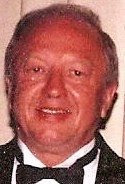The Tea Party movement may have arisen to protest rising deficits and increasing federal control of everything from health care to the auto industry -- but the big-government coalition it's fighting wasn't born in Washington. The federal agenda that the movement is now battling to overturn originated in state capitals like Albany, Trenton and Sacramento.
This agenda has been promoted with growing success in the last 50 years by a self-interested coalition of public-sector unions and social-advocacy groups that benefit from bigger government, higher taxes and more public control of the economy. Merely "taking back" Congress on Election Day won't stop the relentless rise of this coalition, which has at its disposal enormous resources.
President Obama is an expression of the big-government coalition, and his election to the White House was a signature event in its rise to power. He began his public life as a Chicago community activist heading a nonprofit funded heavily by government to organize neighborhood residents into a political force.
As a young college graduate immersed in the world of tax-bankrolled activism, Obama learned a lesson that many other activists also absorbed: To protect the funding that created and nourished their groups, community organizers like him had to head into politics.
An attractive candidate, Obama garnered the support of other activists in his Illinois campaigns, laying the groundwork for his presidential run. Members of ACORN, the controversial social-service group, were among his biggest supporters and worked hard to elect Obama to the US Senate, according to a 2003 article by a Chicago-area ACORN organizer.
In New York, government-funded activists long ago took the same road into politics as the young Obama. Organizers like Ramon Velez (who ran a vast, government-funded nonprofit network in The Bronx), Pedro Espada (who founded and ran Bronx health clinics) and Vito Lopez (who built a Queens social-service empire) all leapt from community activism into state and local politics.
By the early 1990s, in fact, a fifth of all New York City Council members and 15 percent of state legislators had come out of the social-service world. They could be counted on to advocate for higher taxes and more money for government services.
Over time, these activists partnered with another growing force in local government that shared their affinity for bigger government -- public-sector unions. These groups became important players in city halls and state capitals starting in the late 1950s, when then-New York City Mayor Robert Wagner gave public employees the right to collectively bargain in order to win their support in his battles with the Tammany Hall political machine.
Subscribe to:
Post Comments (Atom)

No comments:
Post a Comment